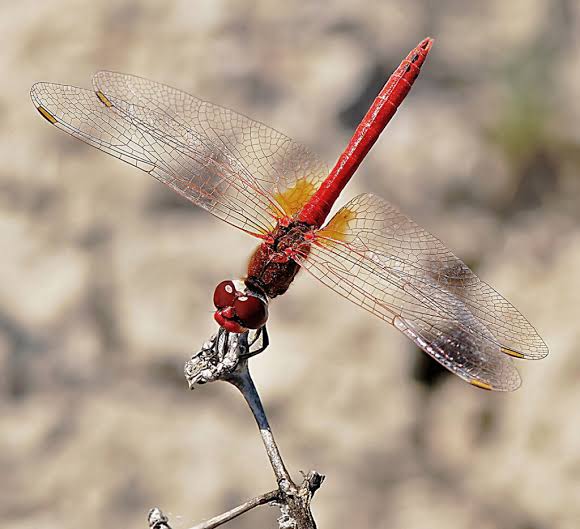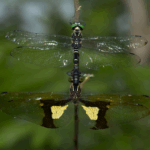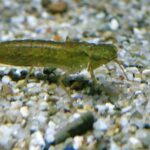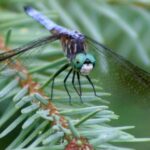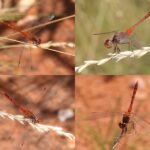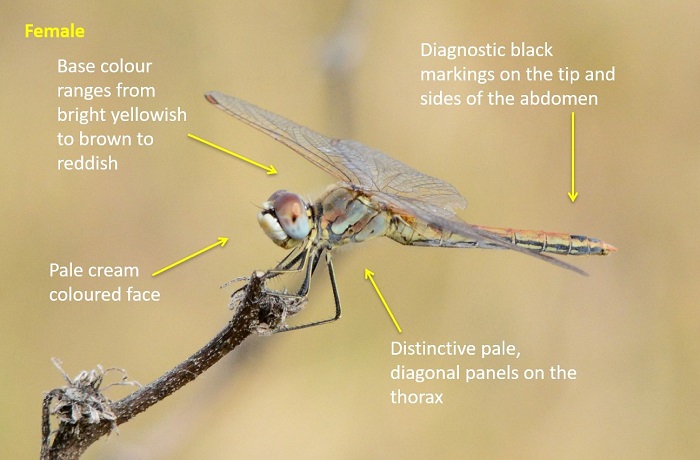
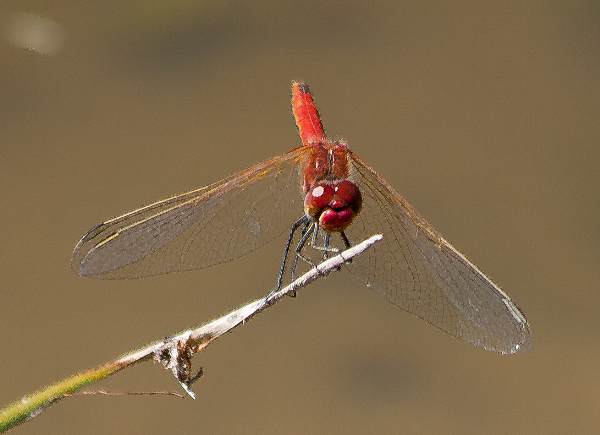
Common migrant.
Male: deep red with red wing veins.
Female: ochre yellow with yellow wing veins.
Status & Distribution
Fairly frequent migrant, principally to the south of Britain, although scattered records from elsewhere. Records have been increasing since the 1980s. Breeding observed regularly, but colonies are seemingly not stable yet.
Habitat
Breeds in large shallow water bodies such as rice paddies in Southern Europe.It breeds in a wide range of habitats including marshes, lakes, ponds, permanent and seasonal rivers. It is able to recolonize dry areas after a rainfall.
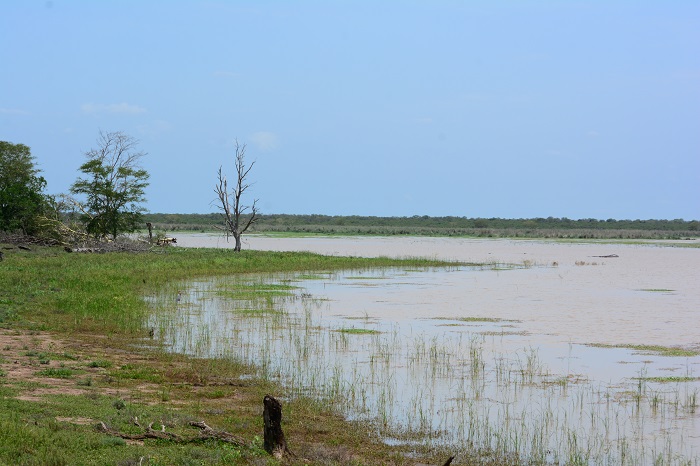
It breeds in a wide range of habitats including seasonal and permanent waters. Inhabits pans, marshes, lakes, ponds, dams and rivers. It is able to quickly recolonize dry areas after rainfall. In arid regions it readily occupies live stock drinking troughs and cement water reservoirs.
Adult Identification
- Length: 38-40mm
- The pale pterostigma (wing spots) outlined in black.
- Eyes brown above and blue below.
- Yellow wing bases.
- Male: deep red with red wing veins. The frons (face) and the thorax are red. Single pale stripe on side of thorax.
- Female: ochre yellow abdomen. Yellow wing veins.
- Immature adults: similar to females.
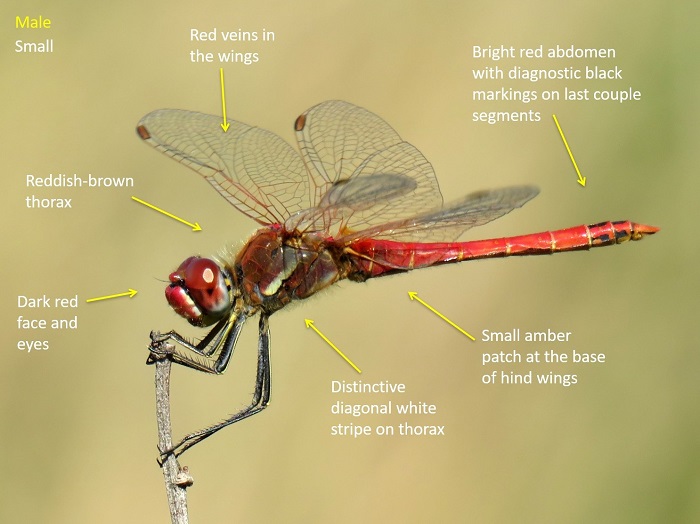
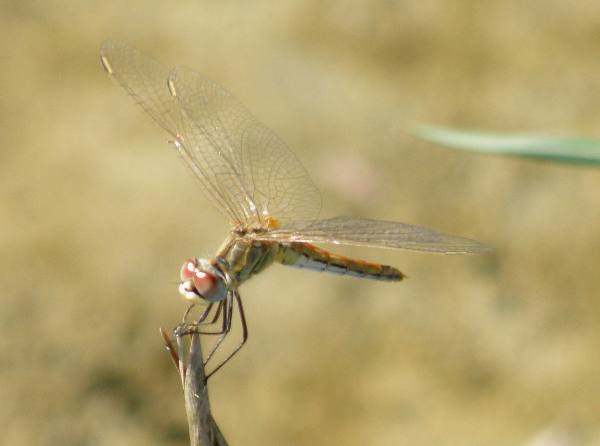
Larval Information
Darters have a squat, spider-like body-shape, a rounded back to the head and eyes that stick out to the sides.
No dorsal spines on the abdomen, but has dorsal setae (hairs) instead.
Abdomen has two dark dorsal stripes.
Identification
Sympetrum fonscolombii can reach a body length of 38–40 millimetres (1.5–1.6 in). This species is similar to other Sympetrum species but a good view with binoculars should give a positive identification, especially with a male.
Males have a red abdomen, redder than many other Sympetrum species. The frons and the thorax are red-brown. The eyes are brown above and blue/grey below. The wings have red veins and the wing bases of the hind-wings are yellow. The pterostigma is pale yellow with a border of black veins.
Female are similar but the abdomen is ochre yellow, not red, with two black lines along each side. The wings have yellow veins at the costa, leading edge and base, not red veins as found in the males. The legs of both sexes are mostly black with some yellow.
Immature males are like females but often with more red and a single line along each side of the abdomen.
Male S. fonscolombii can be mistaken for Crocothemis erythraea as both are very red dragonflies with yellow bases to the wings, red veins and pale pterostigma. However C. erythraea has no black on the legs, a broader body and no black on the head. Also C. erythraea females do not oviposit in tandem. The gestalt image of these two species is different and with some experience are easy to tell apart.
Lifecycle
The Red-veined Darter can be seen on the wing throughout the year in the southern part of its range, but the main flight period is from May to October. These dragonflies produce two or more generations each year, with the eggs hatching into larvae and then developing to the winged adult stage in a period of about three months.
After mating, the male and female fly in tandem for the purpose of egg laying, and the female dips her abdomen in the water to release the eggs.
The specimens shown on this page were photographed in Spain and southern Portugal.
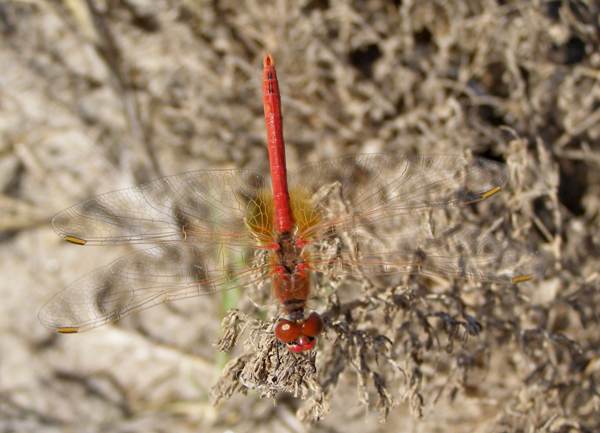
The red-veined darter (Sympetrum fonscolombii) is a species of dragonfly belonging to the genus Sympetrum[1]. Here are some key facts about this dragonfly:
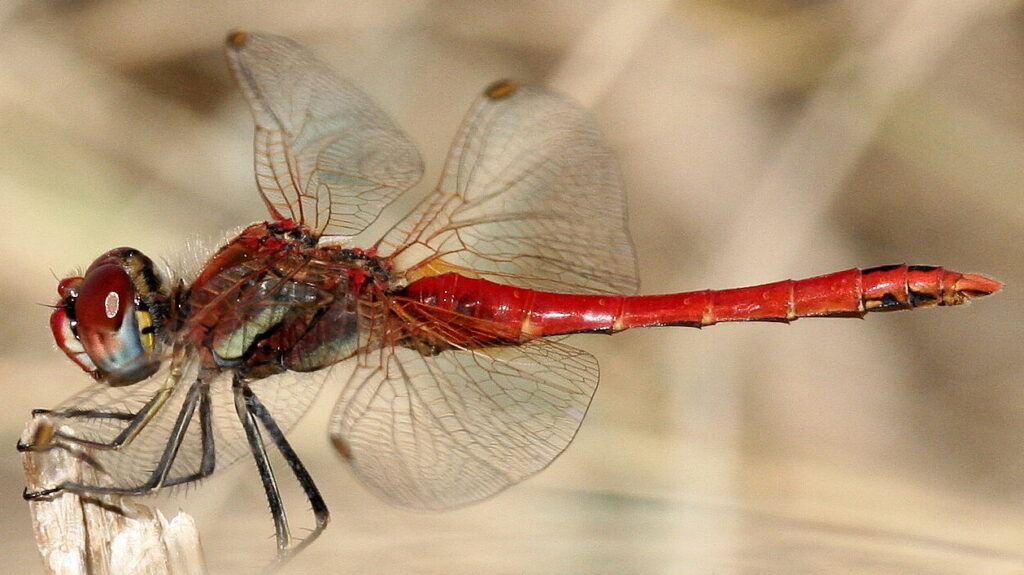
Appearance:
- Males have a bright red abdomen and red wing veins, especially on the leading edges of the wings[1][2]
- Females have an ochre yellow abdomen with two black lines along each side[1][3]
- Both sexes have yellow bases on their hindwings and pale yellow pterostigmas (wing spots) bordered by black veins[1][3]
- Eyes are brown above and blue/grey below[1]
- Body length is typically 38-40 mm[3]
Distribution and Habitat:
- Widespread in central and southern Europe, North Africa, the Middle East, and parts of Asia[1]
- A frequent migrant to Britain, especially southern regions[2]
- Breeds in shallow water bodies like ponds, lakes, rivers, and marshes[1][2]
Behavior:
- Can be seen flying throughout the year in Mediterranean areas[1]
- In Britain, flight period is mainly June to early October[3]
- Females lay eggs in tandem with males, dipping their abdomens in water[5]
Status:
- Considered a fairly frequent migrant to Britain[2]
- Breeding has been observed regularly in Britain since the 1990s, but stable colonies have not yet been established[2][3]
The red-veined darter can be distinguished from similar species by its bright coloration, red wing veins in males, and distinctive pterostigma markings[1][3]. Its migratory nature and increasing presence in northwest Europe make it an interesting species to observe and study.
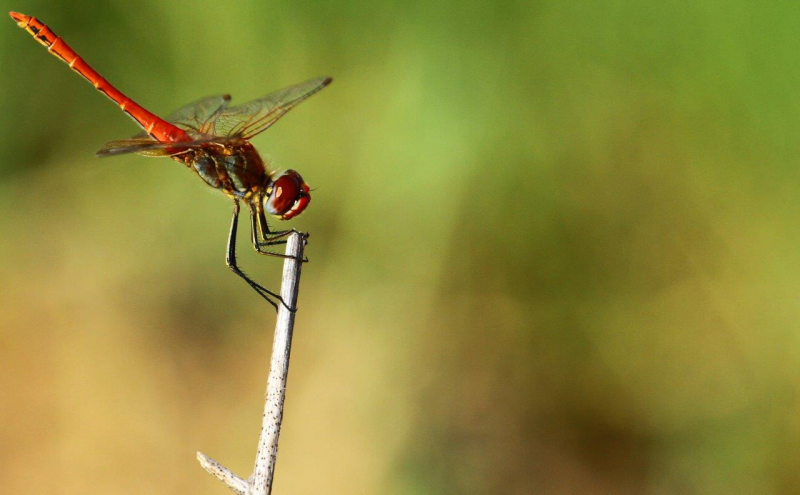
Further Information
Historically the Red-veined Darter has been regarded as a migrant to the British Isles, with scattered records being documented in most years. Prior to 2006 this species maintained a similar status in VC 55, with just two records of what were assumed to be migrants appearing on the LRDG database. These were of a female at Huncote in June 1992 and a male at Kelham Bridge NR in July 1992. Coinciding with a number of widespread proven breeding occurrences in Britain, up to 12 fresh teneral Red-veined Darters were recorded at Huncote in 2006. The initial observation was made on 3rd September and the last on 7th October, with local emergence being strongly suspected. Additionally a further four male Red-veined Darters were observed at Priory Water in 2006, between mid June and early August, though there was no reason to suspect breeding at this site.
Citations:
[1] https://en.wikipedia.org/wiki/Red-veined_darter
[2] https://british-dragonflies.org.uk/species/red-veined-darter/
[3] https://www.naturespot.org.uk/species/red-veined-darter-0
[4] https://british-dragonflies.org.uk/species/common-darter/
[5] https://www.first-nature.com/insects/o-sympetrum-fonscolombii.php

